Showing top 0 results 0 results found
Showing top 0 results 0 results found
Crafting a Winning Digital Customer Experience Strategy for Ecommerce Agencies

What you’ll learn from this article:
Key findings:
Ecommerce agencies should treat a personalized digital CX strategy as a core, ongoing service.
Agencies that lead with a CX strategy move from being implementers to strategic partners. By owning customer journey mapping, real-time support setup, automation, and performance tracking, agencies can deliver measurable impact while creating new revenue opportunities through bundled service tiers, retainers, and CX-focused upsells.
Text Partner Program empowers agencies to scale and monetize CX services with minimal overhead.
Through access to advanced tools, automation features, training, and analytics, agencies can implement high-impact customer experience solutions without building from scratch. This allows them to confidently offer proactive support, AI chatbots, and data-driven optimization as part of a structured digital CX strategy that drives both client growth and agency profitability.

Customer expectations are higher than ever. Online shoppers want fast, personalized, and seamless experiences across every interaction. For ecommerce agencies, this means moving beyond storefront design to deliver strategic value that drives loyalty and growth.
A strong digital customer experience strategy helps brands connect with their audience in real time, reduce friction, and build lifelong customers. It also gives agencies a powerful way to differentiate, deepen client relationships, and generate recurring revenue.
In this article, you’ll learn how to build and scale a results-driven personalized digital CX strategy and how the Text Partner Program can help your agency lead that transformation.
Understanding the modern ecommerce customer
Customer experience can’t be an afterthought for any agency. It must be a central part of the strategy. From live chat and support automation to personalized content and real-time engagement, every touchpoint should make the customer base feel seen, understood, and supported.
A well-crafted strategy helps agencies identify friction points, recommend the right tools, and continuously optimize the digital customer experience journey, turning browsers into buyers and one-time customers into loyal customers.
How to meet customers’ expectations
Modern ecommerce customers’ preferences are driven by several key expectations, and agencies must factor these into any strategic plan they build:
-
Speed and responsiveness: Prospective customers expect websites to load in under two seconds and customer inquiries to be addressed in real-time. Delays often lead to abandonment.
-
24/7 availability: With online shopping occurring around the clock, customers want help at any time, especially during off-hours. Automated support and smart chatbots play a crucial role here.
-
Omnichannel consistency: Whether a customer is browsing on mobile, chatting through Instagram DMs, or checking out via desktop, their experience should feel seamless and cohesive.
-
Personalization at every stage: From product recommendations to post-purchase follow-ups, customers want to feel like the brand knows who they are and what they care about.
-
Trust and transparency: Concerns about data privacy, return policies, and fulfillment timelines require brands to be more transparent than ever. A well-communicated customer support process helps reinforce that trust.
📚 Read our tips on how to help your agency grow!
Why ecommerce agencies must lead the CX conversation
Customer experience is now central to ecommerce success, yet many brands still treat it as secondary, focusing on ads, design, or features without considering how customers actually feel along the way.
Ecommerce agencies have a key opportunity to lead here, not just as technology implementers but as strategic partners shaping the entire customer journey through a clear strategy in the digital world.
From service providers to strategic partners
Agencies that limit their role to design, development, or performance marketing risk being seen as interchangeable vendors. However, when agencies own the customer experience narrative, they position themselves as high-value partners with a long-term stake in client success.
Leading the CX conversation allows agencies to build deeper client relationships, drive recurring revenue, differentiate themselves in a crowded market, and influence platform and tool decisions.
Clients need this kind of digital customer experience management, especially smaller and mid-sized ecommerce brands that lack the in-house expertise or bandwidth to develop and manage customer experience frameworks independently.
Helping clients see the bigger picture
It’s common for ecommerce brands to view customer experience as something that “just happens” organically. They might assume that great support or clear communication will emerge naturally from their processes. But in reality, experience must be designed, tested, optimized, and continuously managed.
Agencies can and should educate clients on the digital touchpoints and the need for a structured strategy by auditing current journeys, highlighting industry benchmarks, modeling the business impact of improvements, and introducing tools and frameworks.
This consultative approach demonstrates both thought leadership and practical value.
Owning the operational side of CX
A strong digital CX strategy is about execution, not just ideas. Ecommerce agencies are uniquely equipped to manage both the technical setup and the human side of CX.
Leading this effort means configuring tools like LiveChat, designing chat automation, writing service playbooks, and tracking key metrics like response time and CSAT. It’s a continuous, customer feedback-driven process, not a one-time fix.
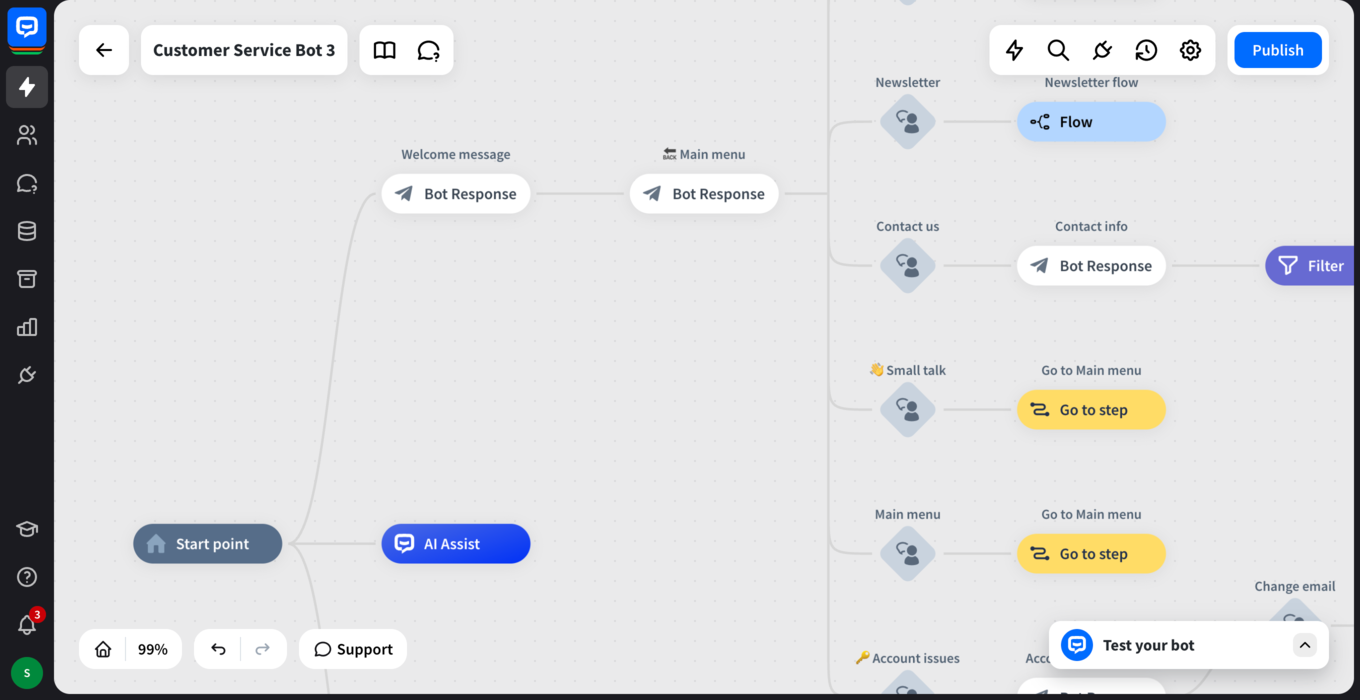
Agencies that own this can package it as a premium service, integrate it into retainers, or use it to unlock upsells like CRO or loyalty programs.
Leading CX = creating competitive moats
When ecommerce agencies take ownership of the customer experience strategy, they create sticky client relationships. Unlike design refreshes or one-time migrations, CX optimization is inherently ongoing. That means: higher lifetime client value, reduced customer churn from project-based fatigue, more touchpoints to prove ROI and impact.
Moreover, agencies that become known for their CX capabilities develop a competitive advantage that goes beyond pricing. They become the go-to partner for ecommerce brands looking to grow sustainably through experience, not just traffic or discounts.
Looking for a beneficial partnership?
Join our Solution Program to unlock a new revenue stream and stand out from the competition.
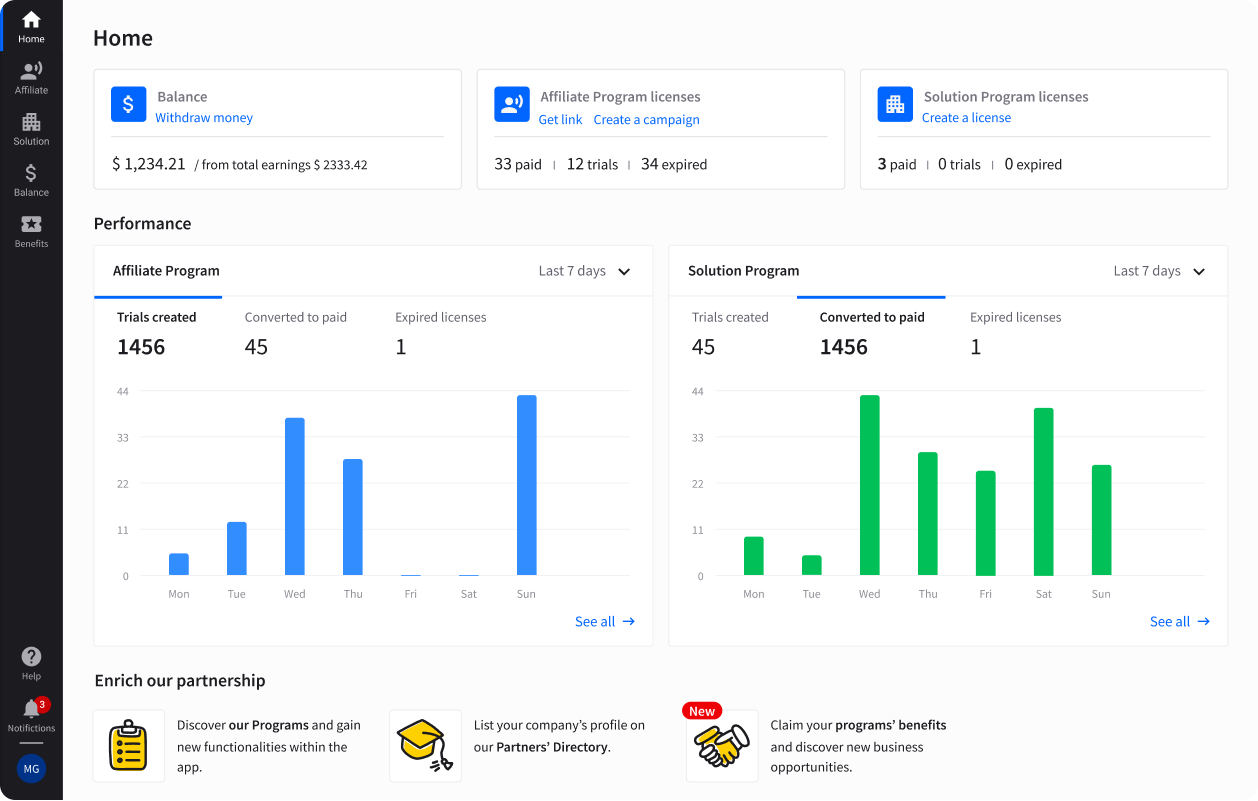
The building blocks of customer experience strategy
Building a strong strategy is not about applying generic best practices. It’s about tailoring tactics and technologies to specific customer relationships, behaviors, business models, and brand identities. For ecommerce agencies, the goal is to establish a repeatable, strategic customer relationship management framework that balances short-term wins with long-term experience optimization.
Journey mapping and friction identification
Customer journey mapping is a core part of any effective digital CX strategy. Agencies should go beyond basic interactions to examine every stage, from the first click to the post-purchase.
This means identifying key moments, customer motivations, emotional triggers, and digital touchpoints causing friction. Done well, it gives agencies a clear blueprint for CX improvements tied to real customer pain.
Technology stack optimization
A digital experience is only as good as the tools supporting it. Many ecommerce brands use outdated or disjointed platforms that limit visibility, responsiveness, and personalization. Agencies should audit their clients’ current stack to identify gaps and recommend tools that work together cohesively.
A modern CX-focused ecommerce stack might include:
-
Email and SMS marketing tools
-
CRM and customer segmentation tools
-
Heatmaps and behavior analytics
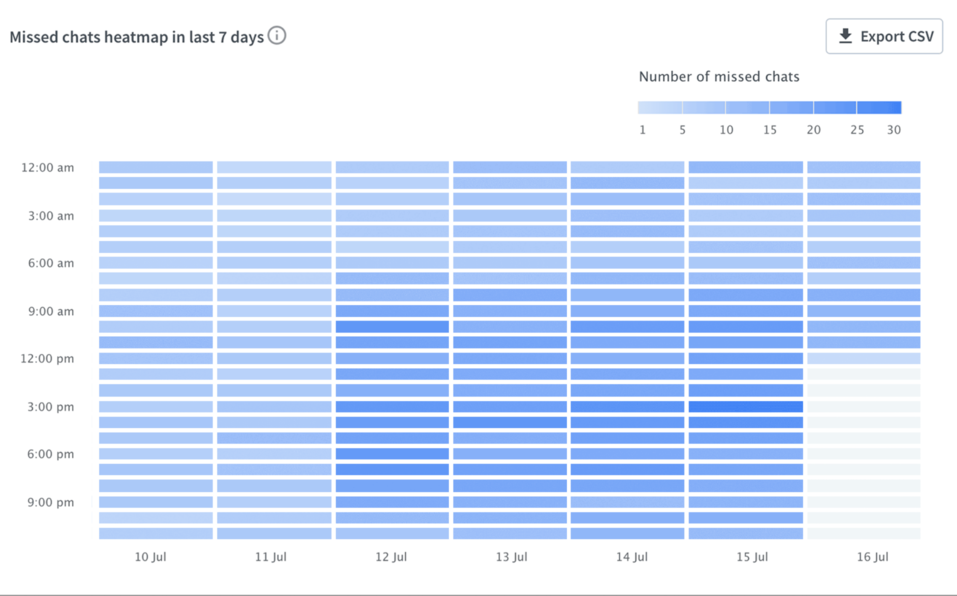
Agencies can add tremendous value by guiding clients through integration decisions, setting up automations, and ensuring that customer data flows smoothly between platforms. This not only improves the experience but also equips clients with insights they can act on.
Real-time engagement and proactive support
Today’s customers expect instant answers; delays cost sales. Agencies should prioritize real-time support tools like live chat, AI bots, and proactive messaging.
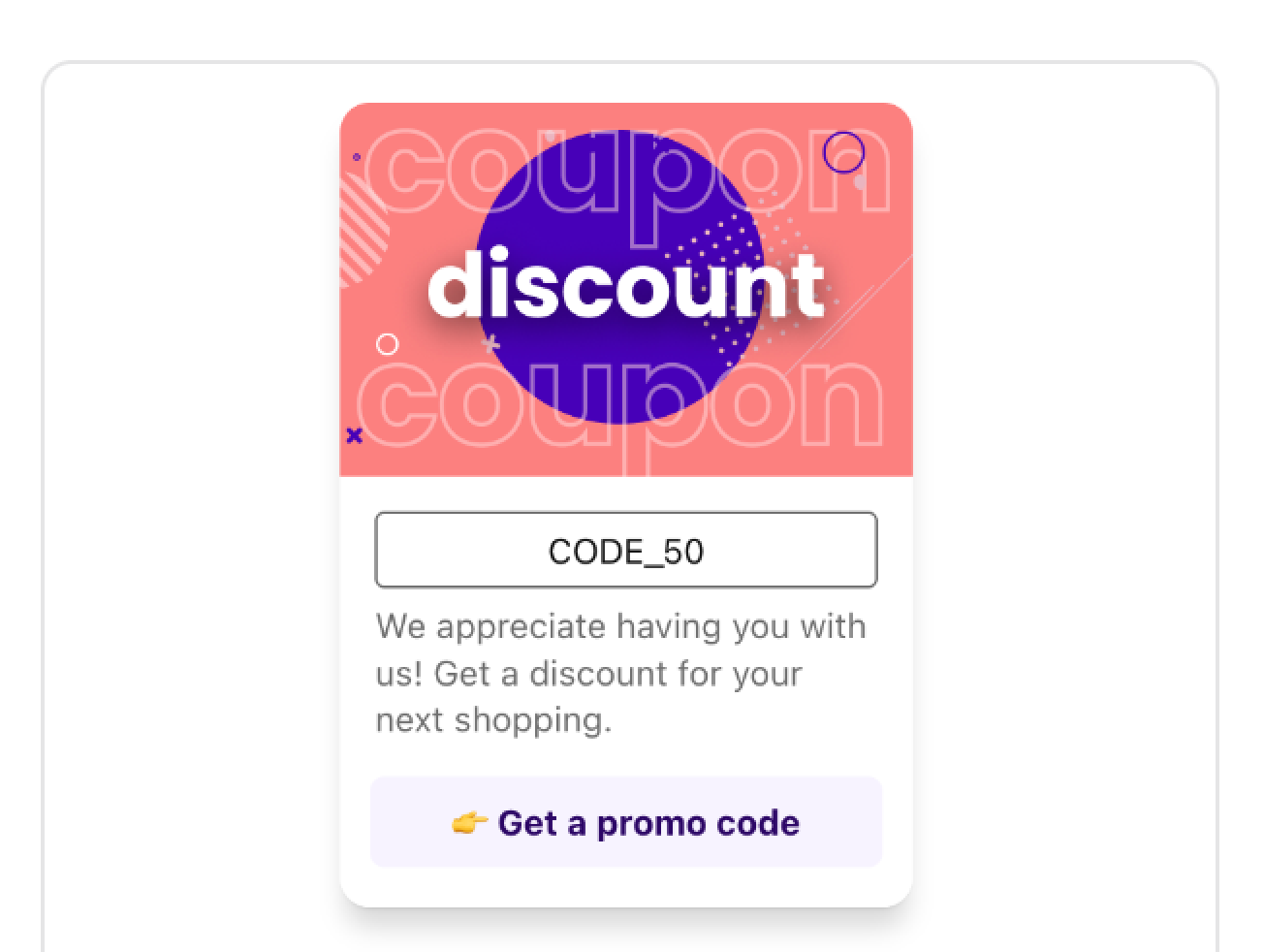
LiveChat, especially with automation, helps answer questions at key moments, reduce cart abandonment, and create human-like interactions. Smart triggers and chat flows turn support into a conversion tool, not just a cost.
As part of a digital customer experience strategy, real-time engagement becomes a clear driver of both sales and brand loyalty.
Personalization and dynamic content delivery
Agencies must help clients leverage operational data to deliver: personalized product recommendations, dynamic landing pages based on traffic source or segment, customized email and SMS sequences based on browsing behavior, and tailored support messages using customer history.
The personalization layer often depends on data from CRMs, analytics tools, and on-site behavior, all of which agencies can help configure and interpret. By aligning personalization efforts with the customer journey, agencies enable brands to build trust and relevance at scale.
Feedback loops and continuous optimization
No digital customer experience strategy is complete without a system for continuous learning. Agencies should help clients gather, interpret, and act on customer feedback about digital interactions to ensure the experience evolves with customer expectations.

The insights gathered here fuel the next wave of improvements, closing the loop between strategy and execution. Agencies that manage this process position themselves as ongoing CX stewards, not one-time consultants.
Performance dashboards and KPI alignment
Clients want to see the impact of their investment. A well-structured CX strategy must include performance dashboards that track key indicators.
Agencies can use platforms like Google Data Studio, Looker, or built-in LiveChat analytics to deliver regular reports and uncover new opportunities for optimization.
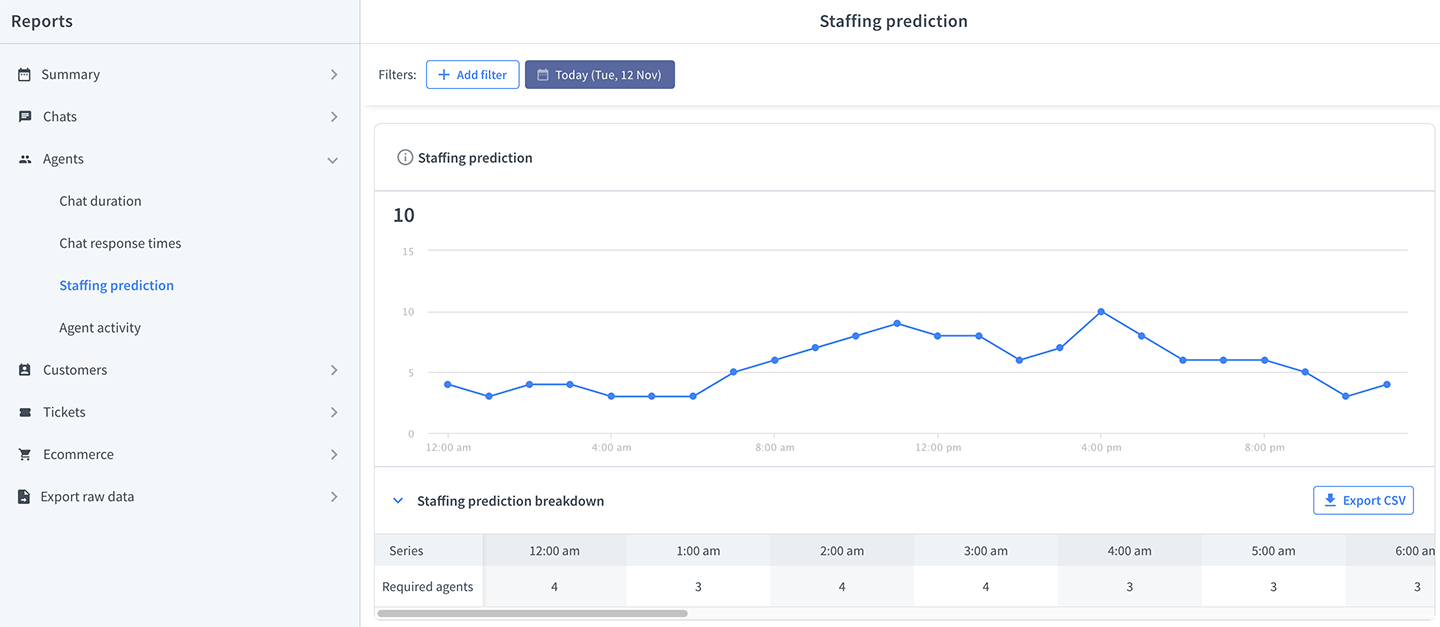
KPIs to measure your digital customer experience
A strong digital customer experience relies on clear measurement. Without customer data, agencies can’t prove impact or guide improvements. Tracking key KPIs turns CX from vague ideas into concrete business results, helping optimize journeys, demonstrate ROI, and uncover new growth opportunities.
| KPI | What it measures | Why it matters | Agency opportunity |
|---|---|---|---|
| Net promoter score (NPS) | Customer loyalty and likelihood to recommend | High NPS signals strong brand advocacy and customer retention | Automate NPS surveys post-purchase and use results to shape loyalty or referral campaigns |
| Customer satisfaction (CSAT) | Immediate feedback on service interactions | Tracks support quality and short-term customer happiness | Monitor CSAT trends to refine support processes or chatbot scripts |
| First response time (FRT) | Time to first reply on support channels | Fast replies improve trust and reduce drop-off | Use automation and LiveChat triggers to reduce wait times |
| Average resolution time (ART) | Total time to fully resolve an issue | Long resolution times lead to frustration and churn | Streamline escalation paths, improve help content, or optimize staffing |
| Live chat conversion rate | % of chat users who convert | Demonstrates how support impacts sales | Place chat on high-intent pages and optimize scripts for conversion |
| Cart abandonment rate | % of users who abandon cart before purchase | High rates often signal friction or unanswered questions | Trigger proactive chats or reminders at key abandonment points |
| Customer effort score (CES) | Ease of completing a task or getting help | Low effort correlates with higher loyalty and repeat business | Simplify support workflows and reduce unnecessary steps |
| Customer lifetime value (LTV) | Total value a customer brings over time | Higher LTV means better retention and relationship building | Recommend post-purchase campaigns, loyalty programs, and retention-focused CX enhancements |
| Digital channel-specific metrics | Performance by support or engagement channel | Highlights which platforms drive the best results | Optimize or phase out underperforming channels; prioritize where customers are most active |
Looking for a beneficial partnership?
Join our Solution Program to unlock a new revenue stream and stand out from the competition.

Selling digital CX strategy to clients
Building a digital experience strategy is just the start; agencies also need to sell their value. Many clients focus on short-term ROI and overlook long-term CX impact. To succeed, agencies must position CX as a revenue driver, not a cost, using clear outcomes and smart packaging.
Reframing customer experience as a growth lever
Many brands still approach customer experience reactively, addressing issues only after problems arise. Agencies must shift the conversation, positioning CX as a proactive growth driver that improves conversion rates, reduces churn, increases lifetime value, and boosts efficiency through automation and self-service.
It’s not just about making customers feel good; it’s about influencing behavior and delivering measurable business impact.
Talking point for agencies:
“Customer experience isn’t just how someone feels; it’s how they act. If we reduce friction during checkout or solve support requests instantly, we’re not just improving satisfaction, we’re directly increasing sales.”
Show the data, not just the vision
To sell a strategy, back it up with real-world results. Share metrics like increased conversions from proactive chat, reduced ticket volume through automation, or higher repeat purchases tied to CSAT improvements. If you’re a Text Partner, leverage LiveChat analytics or case studies to strengthen your pitch.
Clients are more likely to invest when they see proven success, especially from similar industries.
💡 Pro tip: Present a “CX Baseline Report” early on to highlight current gaps and the potential upside. It turns abstract strategy into a clear business opportunity.
Bundle, brand, and tier your CX offerings
Treat CX like a product, not a vague add-on. Package it into clear service tiers (like Starter, Growth, Pro) with defined deliverables like journey mapping, chatbot design, or KPI tracking. Include LiveChat setup and reporting where relevant.
Give each package a compelling name to communicate value and outcomes, not just tasks.
💡 Agency tip: Tie each tier to a performance goal. For example, “This plan is designed to increase your repeat purchase rate by 15% in three months through automation and post-purchase touchpoints.”
Speak in executive language, not technical jargon
When selling to ecommerce founders or executives, avoid overly technical language about scripts, integrations, or frameworks. Instead, speak in outcomes:
-
“We’ll help you recover more abandoned carts.”
-
“This strategy will reduce your average time-to-resolution, which correlates with higher customer retention.”
-
“We’ll show you which support conversations are costing you sales and fix the root causes.”
Tie the CX strategy to financial levers that matter to decision-makers. If you can show how a $500/month investment in chat and automation could generate $5,000/month in recovered sales or upsells, the conversation shifts from expense to opportunity.
Leverage the Text brand and Partner toolkit
Agencies that are part of the Text Partner Program gain a valuable trust-building asset when selling to clients. Text’s LiveChat is a recognized name in ecommerce and one that signals credibility and capability.
Ways to use this in your sales process:
-
Add Text Partner Program certification badges to your website, pitch decks, and email signatures.
-
Include branded case studies showing Text success stories in ecommerce.
-
Co-host educational content (like webinars, guides) that teach clients about CX trends and solutions.
-
Offer a free trial of Text apps via your Partner App dashboard to remove adoption barriers.
By embedding a trusted platform into your offering, you shift from “we recommend chat” to “we have a proven method to increase conversions using a best-in-class platform.”
Use CX to open the door to larger conversations
One of the hidden benefits of selling an experience strategy is that it often uncovers deeper business challenges, many of which translate into additional projects or retainers.
For example:
-
Friction in customer service may reveal a need for UX redesign.
-
A spike in NPS from one segment may justify building a loyalty program.
-
Support transcript analysis might show gaps in product messaging or FAQs.
By starting with CX, agencies build trust, demonstrate strategic thinking, and position themselves as problem-solvers, paving the way for broader digital transformation initiatives.
Looking for a beneficial partnership?
Join our Solution Program to unlock a new revenue stream and stand out from the competition.

Future-proofing with automation and AI
Customer expectations are rising fast, and ecommerce brands must keep up. To stay competitive, agencies should embrace automation and AI as essential tools for scaling high-quality experiences. This shift lets agencies lead clients into a future where proactive support and smart personalization are standard.
The shift from reactive to predictive CX
Modern CX is moving from reactive to proactive. With automation and AI, brands can anticipate customer needs and offer help before frustration sets in.
Agencies can set up behavior-based triggers, personalized chat prompts, and automated responses that solve common issues instantly. This not only improves support but also boosts conversions and customer loyalty.
By guiding clients toward this predictive model, agencies turn CX into a real growth driver, not just a service fix.
Intelligent chatbots are beyond FAQs
Today’s AI chatbots do much more than answer basic questions. Integrated with platforms like LiveChat, they can qualify leads, guide users through complex decisions, handle order-related requests, and escalate to human agents when needed, all in real time.
This blend of automation and personalization reduces wait times, cuts support costs, and creates smoother customer experiences.
💡 Agency tip: Offer chatbot design as a standalone service. Build custom flows tailored to each client’s journey, like a “Style Selector” for fashion or a “Product Finder” for health brands, positioning chatbots as both support tools and conversion drivers.
Personalization at scale with AI
AI moves personalization from static rules to real-time intelligence. Based on live data, it can recommend products, adapt homepage content, send behavior-based messages, and even predict when a customer is likely to churn or buy more.
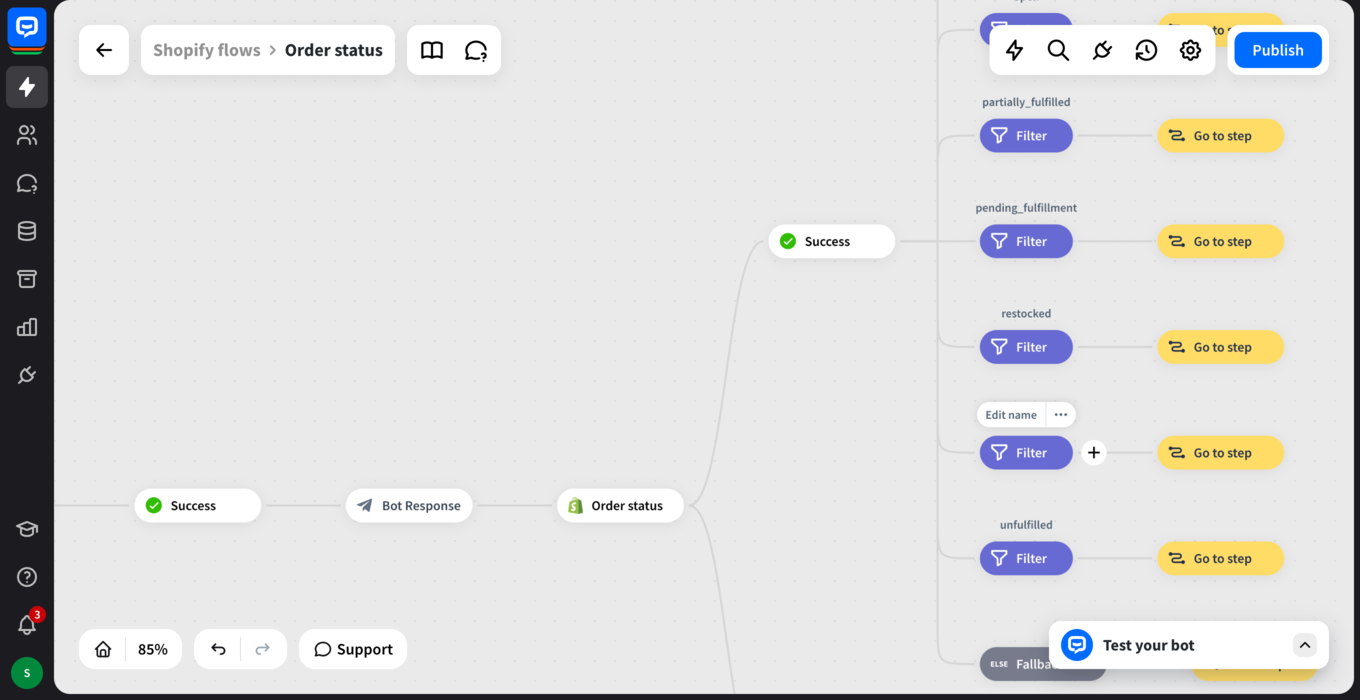
This creates highly tailored experiences that feel natural and relevant at every touchpoint.
💡 Agency tip: Help clients connect AI tools with their ecommerce platforms, CRMs, and marketing systems. It’s a powerful way to boost engagement and drive conversions without increasing manual effort.
Sentiment analysis and support triage
AI isn’t just for personalization; it also upgrades support. It can detect sentiment in real time, route urgent issues to senior agents, and guide teams with empathy-driven responses.
These tools help brands resolve issues faster and improve satisfaction scores.
💡 Agency tip: Implement AI-powered support tools to streamline service, surface customer pain points, and enhance the overall CX strategy with data-backed improvements.
Voice and conversational commerce
As voice assistants become more common, ecommerce brands are starting to explore voice commerce, allowing customers to search, order, and manage purchases via spoken commands.
Agencies should begin preparing for this shift by optimizing product data for voice search, exploring conversational UX design principles, and advising clients on how voice fits into their multiple-channel mix.
While still emerging, voice commerce is poised to become a key CX digital touchpoint in the next 3–5 years. Agencies that can help clients get ahead of this trend will position themselves as innovation leaders.
Automation doesn’t eliminate the human touch; it enhances it
One of the biggest misconceptions around automation and AI is that they depersonalize customer service. In truth, they make human interaction more meaningful by eliminating repetitive tasks and freeing up time for complex, emotional, or high-stakes conversations.
For example:
-
A chatbot handles a return request automatically, allowing agents to focus on upselling to a VIP customer.
-
AI prioritizes a delayed shipment issue so it’s resolved before the customer complains.
-
Automated emails trigger a live chat if a customer expresses dissatisfaction in feedback.
These enhancements don’t replace empathy; they amplify it by giving humans the tools and time to engage when it matters most.
Staying ahead with the LiveChat ecosystem
Text Partner Program gives agencies a front-row seat to innovation. From early access to AI-powered features and CRM integrations to developer tools and dedicated training, it equips your team to deliver smarter, more scalable CX solutions.
You get the tools to build advanced chat flows, automate engagement, and stay competitive without needing to develop complex systems in-house.
💡 Agency tip: Leverage the LiveChat, HelpDesk, and ChatBot platforms to focus on what matters most: strategy, configuration, and performance, while letting the Text ecosystem handle the heavy technical lift.
Conclusion
Customer experience is now the defining factor in ecommerce success. It influences every touchpoint, from the first click to the repeat purchase, and shapes how customers feel, act, and stay loyal.
For ecommerce agencies, this isn’t just a trend; it’s a transformation. Agencies that prioritize digital customer experience strategy are no longer just building online stores. They’re creating value-driven journeys that boost satisfaction, increase conversions, and grow lifetime value.
By partnering with tools like LiveChat and leveraging automation, real-time engagement, and data-driven insights, your agency can lead clients toward future-ready experiences. And with a strong CX foundation, you don’t just deliver results; you become indispensable.
Now is the time to lead the customer experience conversation. Become a Text Partner now and make CX your agency’s competitive advantage, and position yourself not just as a service provider, but as a true growth partner.


